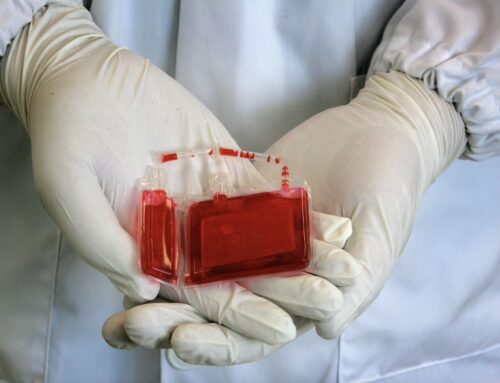Infant Health
There are several health conditions and factors that can affect infant health:
Premature Birth
Premature infants, born before 37 weeks of gestation, are at an increased risk for various health issues due to their immature organs and systems. Some common health issues that prematurely born infants may face include:
- Respiratory distress syndrome (RDS): Premature infants often have underdeveloped lungs, which can lead to difficulty breathing. RDS is a common condition in premature babies and may require respiratory support.
- Apnea of prematurity: Premature infants are more likely to experience pauses in breathing (apnea), which can be due to an immature respiratory center in the brain. This may require monitoring and sometimes treatment.
- Jaundice: Premature babies are at an increased risk of jaundice, a condition caused by high levels of bilirubin in the blood. Jaundice is usually mild and can be treated with phototherapy.
- Intraventricular hemorrhage (IVH): This is bleeding into the fluid-filled areas (ventricles) inside the brain. It is more common in very premature infants and can range from mild to severe.
- Patent ductus arteriosus (PDA): In premature infants, the ductus arteriosus, a blood vessel that connects the aorta and pulmonary artery, may remain open (patent) and cause breathing difficulties and heart failure.
- Necrotizing enterocolitis (NEC): NEC is a serious condition where a portion of the bowel undergoes tissue death. Premature infants are at higher risk, and treatment may involve antibiotics, stopping feeds, and sometimes surgery.
- Infections: Premature infants have an immature immune system, making them more susceptible to infections like pneumonia. They may require antibiotics and supportive care if they develop an infection.
- Developmental delays: Premature infants are at a higher risk for developmental delays, including motor skills, language, and cognitive development.
- Feeding difficulties: Premature infants may have difficulty coordinating sucking, swallowing, and breathing, making feeding challenging. They may require specialized feeding methods or tube feeding.
- Long-term health issues: Premature infants are at a higher risk for long-term health issues, such as cerebral palsy, vision and hearing impairments, and learning disabilities.
It’s important for premature infants to receive specialized care in a neonatal intensive care unit (NICU) to monitor and manage these potential health issues. Early intervention and follow-up care are crucial for optimizing the long-term health and development of premature infants.
Low Birth Weight
Low birth weight (LBW) infants, defined as weighing less than 2,500 grams (5.5 pounds) at birth, face a range of health issues due to their smaller size and often premature birth. Some common issues that low birth weight infants may deal with include:
- Respiratory problems: LBW infants are at a higher risk of respiratory distress syndrome (RDS) due to immature lungs. They may require respiratory support, such as supplemental oxygen or mechanical ventilation.
- Feeding difficulties: LBW infants may have trouble feeding due to weak sucking reflexes and immature digestive systems. They may require specialized feeding methods or tube feeding.
- Temperature regulation: LBW infants have less body fat, which makes it harder for them to regulate their body temperature. They may need to be kept warm in an incubator or under a radiant warmer.
- Jaundice: LBW infants are more prone to jaundice, a condition caused by high levels of bilirubin in the blood. It is usually mild but may require treatment with phototherapy.
- Infections: LBW infants have an immature immune system and are more susceptible to infections. They may need antibiotics if they develop an infection.
- Delayed growth and development: LBW infants may experience delayed growth and development, including slower weight gain and developmental milestones.
- Neurological problems: LBW infants are at a higher risk of neurological problems, including intraventricular hemorrhage (IVH) and cerebral palsy.
- Long-term health issues: LBW infants are at a higher risk of long-term health issues, such as learning disabilities, vision and hearing impairments, and chronic health conditions.
It’s important for LBW infants to receive specialized care in a neonatal intensive care unit (NICU) to monitor and manage these potential health issues. Early intervention and follow-up care are crucial for optimizing the long-term health and development of LBW infants.
Common Birth Defects
Babies born with common birth defects can face a range of health issues depending on the type and severity of the defect. Some common birth defects and the issues associated with them include:
- Congenital heart defects: Babies born with heart defects may experience symptoms such as rapid breathing, poor feeding, and bluish skin due to poor oxygen circulation. They may require surgery or other interventions to correct the defect.
- Cleft lip and palate: Babies with cleft lip or palate may have difficulty feeding and may be at an increased risk of ear infections and dental problems. They may require surgery to repair the cleft.
- Spina bifida: Babies with spina bifida may have varying degrees of paralysis, bowel and bladder problems, and difficulty walking. They may require surgery and ongoing medical care.
- Down syndrome: Babies with Down syndrome may have intellectual disabilities, delayed development, and certain physical characteristics such as low muscle tone and upward slanting eyes. They may also have an increased risk of certain health issues, such as heart defects and thyroid problems.
- Clubfoot: Babies born with clubfoot have a foot that is twisted out of shape or position. They may require casting, bracing, or surgery to correct the condition.
- Hydrocephalus: Babies with hydrocephalus have an accumulation of cerebrospinal fluid in the brain, which can lead to an enlarged head, developmental delays, and vision problems. They may require surgery to insert a shunt to drain the fluid.
- Cerebral palsy: Babies with cerebral palsy may have problems with muscle tone, movement, and coordination. They may require physical therapy, occupational therapy, and other interventions to manage the condition.
- Spinal muscular atrophy: Babies with spinal muscular atrophy have weakness and loss of muscle control, which can lead to difficulty breathing, swallowing, and moving. They may require supportive care and treatments to manage the condition.
These are just a few examples of common birth defects and the issues associated with them. Each baby is unique, and the health issues they face will depend on the specific nature of their birth defect. Early diagnosis and intervention are crucial for managing these conditions and improving outcomes for affected babies.
Infant Infections
Newborns are susceptible to various infections due to their immature immune systems. Some common infections that newborns may deal with include:
- Respiratory Syncytial Virus (RSV): RSV is a common respiratory virus that can cause mild cold-like symptoms in adults and older children but can be more severe in newborns, especially those born prematurely or with underlying health conditions.
- Group B Streptococcus (GBS) infection: GBS is a type of bacteria that can cause serious infections in newborns, including sepsis (blood infection), pneumonia, and meningitis. Pregnant women are routinely screened for GBS during pregnancy to prevent transmission to the baby during childbirth.
- Herpes simplex virus (HSV): HSV can cause cold sores or genital herpes in adults, but in newborns, it can cause serious infections, including encephalitis (brain inflammation) and disseminated disease.
- E. coli infection: E. coli is a type of bacteria that can cause infections in newborns, particularly those born prematurely or with low birth weight. E. coli infections can cause sepsis, pneumonia, and meningitis.
- Group A Streptococcus (GAS) infection: GAS is another type of bacteria that can cause serious infections in newborns, including sepsis, pneumonia, and necrotizing fasciitis (a severe soft tissue infection).
- Urinary tract infections (UTIs): UTIs can occur in newborns and are more common in girls than boys. Symptoms may include fever, irritability, and feeding difficulties.
- Viral infections: Other viral infections that can affect newborns include influenza (flu), adenovirus, and enterovirus infections, which can cause respiratory symptoms, fever, and in severe cases, complications such as pneumonia or meningitis.
- Fungal infections: Newborns, especially those receiving antibiotics or with weakened immune systems, are at risk for fungal infections such as candidiasis (thrush) and systemic candidiasis.
It’s important for parents and caregivers to practice good hygiene and seek prompt medical attention if they suspect their newborn may have an infection. Early diagnosis and treatment are crucial for managing infections in newborns and preventing complications.
Jaundice
Infants with jaundice are often treated with phototherapy, which involves exposing the baby’s skin to special lights that help break down the bilirubin in their blood. This process helps the baby’s body eliminate the excess bilirubin and can reduce the yellowing of the skin and eyes.
During phototherapy, the baby is placed under a special light or lights, either in a bassinet or incubator, with their eyes covered to protect them from the bright light. The baby’s skin is exposed as much as possible to the light to maximize the effectiveness of the treatment.
In some cases, if the jaundice is severe or does not improve with phototherapy, other treatments may be necessary. These may include:
- Exchange transfusion: In this procedure, small amounts of the baby’s blood are removed and replaced with donor blood. This helps lower the level of bilirubin in the baby’s blood.
- Intravenous immunoglobulin (IVIG): IVIG is a treatment that can help reduce the level of antibodies that may be causing the jaundice.
- Medications: In some cases, medications may be used to help the baby’s body eliminate bilirubin more effectively.
It’s important for infants with jaundice to be monitored closely by healthcare providers to ensure that their bilirubin levels are decreasing and that they are responding well to treatment. In most cases, jaundice is a temporary and harmless condition that resolves on its own or with treatment.
Sudden Infant Death Syndrome (SIDS)
Sudden Infant Death Syndrome (SIDS) is the sudden, unexplained death of an infant under one year of age, typically during sleep. SIDS is often referred to as crib death because it usually occurs when a baby is sleeping in a crib. The exact cause of SIDS is unknown, but it is believed to involve a combination of factors, including physical and environmental factors, such as an underlying vulnerability in the baby’s brain, combined with certain environmental stresses or triggers.
SIDS is relatively rare but remains a leading cause of death in infants between one month and one year of age. The incidence of SIDS has decreased significantly since the 1990s, largely due to public health campaigns promoting safe sleep practices for infants, such as placing babies on their backs to sleep, using a firm mattress and tight-fitting sheet in a safety-approved crib, and avoiding overheating.
Despite these efforts, SIDS still accounts for a small percentage of infant deaths each year. It is important for parents and caregivers to be aware of safe sleep practices and to follow guidelines to reduce the risk of SIDS. If you have concerns about SIDS or safe sleep practices, it’s important to speak with your healthcare provider.
Infant Respiratory Distress
Infant Respiratory Distress Syndrome (RDS) is a common breathing disorder that affects premature infants. It is caused by a lack of a substance called surfactant, which helps keep the lungs open and prevents them from collapsing. Here’s how RDS is typically dealt with:
- Surfactant replacement therapy: Infants with RDS are often given surfactant replacement therapy to help improve lung function. This can be done through a breathing tube that is inserted into the windpipe (trachea) or by placing the surfactant directly into the baby’s lungs through a breathing mask.
- Oxygen therapy: Infants with RDS may require supplemental oxygen to help them breathe. Oxygen can be delivered through a nasal cannula, a face mask, or a breathing tube, depending on the severity of the condition.
- Mechanical ventilation: In severe cases of RDS, infants may require mechanical ventilation to help them breathe. This involves using a machine to deliver oxygen to the lungs and help keep the airways open.
- Continuous positive airway pressure (CPAP): CPAP is a non-invasive form of respiratory support that can help keep the baby’s airways open and improve oxygen levels in the blood.
- Monitoring and supportive care: Infants with RDS require close monitoring of their breathing, oxygen levels, and overall condition. They may also require supportive care, such as intravenous fluids and nutrition, to help them recover.
The outlook for infants with RDS varies depending on the severity of the condition and the baby’s overall health. With prompt diagnosis and appropriate treatment, most infants with RDS can recover and go on to lead healthy lives. However, some infants may experience long-term respiratory problems or other complications as a result of RDS.
Infant Feeding Issues
Infants can experience various feeding issues that may affect their ability to breastfeed or bottle-feed. Some common feeding issues in infants include:
- Latch difficulties: Infants may have trouble latching onto the breast or bottle, which can make breastfeeding or bottle-feeding challenging and lead to inadequate feeding.
- Poor suck-swallow coordination: Some infants have difficulty coordinating the sucking and swallowing reflexes necessary for feeding. This can result in slow or inefficient feeding and may lead to feeding difficulties.
- Refusal to feed: Some infants may refuse to breastfeed or bottle-feed due to reasons such as discomfort, illness, or a dislike of the feeding method.
- Gastroesophageal reflux (GERD): GERD is a condition in which stomach contents flow back into the esophagus, causing discomfort and sometimes spitting up. This can affect feeding and lead to feeding aversions.
- Tongue tie: Tongue tie is a condition in which the thin piece of skin under the baby’s tongue (frenulum) is shorter than usual, which can restrict the movement of the tongue and interfere with breastfeeding.
- Colic: Colic is a condition characterized by excessive crying and fussiness in infants, often without an apparent cause. Colic can interfere with feeding and make feeding times challenging for both the baby and the caregiver.
- Allergies or intolerances: Some infants may have allergies or intolerances to certain foods or ingredients in breast milk or formula, which can cause feeding difficulties and discomfort.
- Low milk supply: Some breastfeeding mothers may experience low milk supply, which can make it difficult for the infant to get enough milk during feedings.
It’s important for parents and caregivers to monitor their infant’s feeding habits and seek advice from a healthcare provider if they have concerns about feeding issues. A healthcare provider can help diagnose the underlying cause of the feeding issue and recommend appropriate treatment or management strategies.
Neurological Issues
Infants can experience a range of neurological issues, some of which may be present at birth (congenital) or develop shortly after birth. These issues can affect the brain, spinal cord, nerves, and muscles, and may impact development and function. Common neurological issues in infants include:
- Seizures: Seizures in infants can be caused by various factors, including brain injury, infection, or metabolic disorders. Seizures can manifest as subtle movements or more pronounced shaking and may require medical intervention.
- Cerebral palsy: Cerebral palsy is a group of disorders that affect movement and muscle tone. It is caused by abnormal brain development or damage to the developing brain and can result in motor impairments.
- Hypoxic-ischemic encephalopathy (HIE): HIE is a type of brain injury caused by oxygen deprivation and limited blood flow to the brain, often occurring during birth. It can result in long-term neurological deficits if not treated promptly.
- Intraventricular hemorrhage (IVH): IVH is bleeding into the fluid-filled spaces (ventricles) of the brain, often seen in premature infants. It can lead to developmental delays and other neurological issues.
- Neonatal stroke: Neonatal stroke is a rare condition where a blood clot or bleeding occurs in the brain of a newborn. It can result in motor, cognitive, and developmental impairments.
- Hydrocephalus: Hydrocephalus is a condition where there is an abnormal accumulation of cerebrospinal fluid in the brain, leading to increased pressure. It can cause head enlargement and developmental delays.
- Neurodevelopmental disorders: Infants may be at risk for neurodevelopmental disorders such as autism spectrum disorder (ASD) or attention-deficit/hyperactivity disorder (ADHD), which can affect behavior, social interaction, and communication.
- Neonatal hypoglycemia: Low blood sugar levels in newborns can lead to neurological issues if not treated promptly. It can cause seizures, developmental delays, and cognitive impairments.
Early identification and intervention are crucial for managing neurological issues in infants. Treatment may include medication, therapy, and supportive care to help optimize development and improve outcomes.
Exposure to Substances During Pregnancy
Exposure to substances during pregnancy can have various effects on the developing fetus, depending on the substance, the timing and duration of exposure, and other factors. Some common substances that can have effects on the fetus when exposed during pregnancy include:
- Alcohol: Prenatal exposure to alcohol can cause a range of developmental issues known as fetal alcohol spectrum disorders (FASDs). These can include physical, cognitive, and behavioral problems, such as growth deficits, intellectual disabilities, and behavioral disorders.
- Tobacco: Smoking during pregnancy can increase the risk of complications such as preterm birth, low birth weight, and certain birth defects. It can also increase the risk of Sudden Infant Death Syndrome (SIDS) and respiratory issues in the infant.
- Illicit drugs: Drugs such as cocaine, heroin, and methamphetamine can have serious effects on fetal development. They can increase the risk of preterm birth, low birth weight, birth defects, and developmental delays.
- Prescription medications: Some prescription medications can have harmful effects on the fetus if taken during pregnancy. It’s important for pregnant women to consult with their healthcare provider about the safety of any medications they are taking.
- Environmental toxins: Exposure to environmental toxins such as lead, mercury, and pesticides during pregnancy can increase the risk of developmental issues and birth defects.
- Marijuana: While the effects of marijuana use during pregnancy are still being studied, some research suggests that it may be linked to developmental issues and lower birth weight.
- Opioids: Prenatal exposure to opioids can lead to neonatal abstinence syndrome (NAS), where the baby experiences withdrawal symptoms after birth. Opioid use during pregnancy can also increase the risk of preterm birth and low birth weight.
It’s important for pregnant women to avoid exposure to harmful substances and to discuss any potential exposures with their healthcare provider. Early prenatal care and avoiding substances known to be harmful during pregnancy can help reduce the risk of adverse effects on the fetus.




